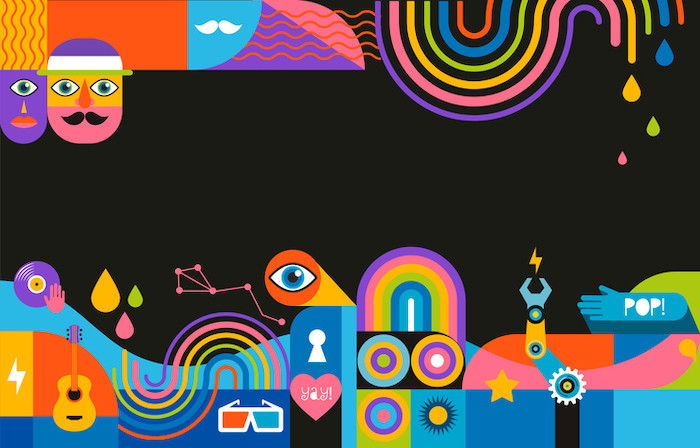
A bar’s atmosphere is sometimes indefinable, yet there’s science behind the harnessing of the senses. Professor Charles Spence investigates.
Atmosphere was the talk of the town recently, with one prominent bar owner complaining that too many bartenders spend their energies on creating the next Instagram–worthy drink, while seemingly forgetting about the atmosphere in the bar where that drink will be consumed.
Whenever, wherever and whatever we drink, there is always an atmosphere, a certain lighting level, background music or silence, the smell of smoke (though these days perhaps not). Even the humidity and ambient temperature contribute to create the multisensory atmosphere in the bar. And the multisensory attributes of the atmosphere influence our food and beverage choices far more than any of us realise. What’s more, it affects what we think about the taste/flavour of the drink we just ordered.
Not that it feels that way to any of us. We all, I think, believe we can simply taste the drink in our mouth, and that nothing else really matters – not the weight of the glass in which it is served, nor the speed, tempo, style or loudness of the music playing in the background.
That said, most of us have also experienced a variant of the so-called Provençal Rosé Paradox. This is the name given by scientists to the oft-mentioned observation that that rosé wine, the one that tasted so wonderful au bord de la mer in Provence on your summer holidays, never tastes quite the same when you open a bottle of the same back home on a cold winter’s night.
For the cocktail maker, the equivalent is perhaps the way that Cuban rum just seems to taste so much better in the old town of Havana than it does at your bar at home. I sometimes wonder just how much influence the humidity/temperature has on the tasting experience in this case, or perhaps it is the ever-present music.
Exploiting the impact
Guinness cottoned on to the profound impact of the atmosphere/context in promoting sales – contributing to the global explosion of Irish-themed pubs and bars in recent decades. Indeed, there is plenty of research out there to show that people are more likely to order French wine if French accordion music is playing, while sales of German wine sky-rocket when a bit of oompa-oompa German bierkeller music is played in the background instead. Intriguingly, when you ask customers whether the music influenced their choices they mostly deny it vociferously, but the sales figures and customer satisfaction ratings tell a very different story.
Sometimes even the very authenticity of the food or drink offering can be enhanced simply by matching the atmosphere – think only of the red-and-white check tablecloths, the Italian flags draped on the walls, the wine bottles on the table, and perhaps a bit of Pavarotti in the background to make your Italian meal taste oh so much more authentic.
However, beyond these semantic effects, the basic sensory aspects of the environment also affect the choices we make. For instance, people have been shown to order spicier chicken wings, and those who like strong coffee drink more of it under bright rather than dim lighting. Meanwhile, blue lighting reduces the amount that Swedish men eat for breakfast (don’t ask me why). That said, it has to be the musical element of the atmosphere that is the easiest to change. I know of a number of international bar and restaurant chains that deliberately play loud, fast music all day long, believing that it increases drinks sale by as much as 27%. Meanwhile, if you want your guests to order a more expensive drink, the chances are that playing a little classical music will help.
Congruent clues
Scent is important too, especially since indoor smoking was banned some years ago, as what was left was often an unpleasant, dank smell. My colleague Rick Schifferstein looked at people’s experiences in Dutch discos, showing that adding a pleasant fragrance could help to enhance people’s nightlife experience. Meanwhile, 69 Colebrook Row in London used to spray a distinctive scent on the wall outside the entrance to the bar. The key thing when constructing the multisensory atmosphere in a bar is to make sure the various cues are congruent – that way you will have more chance of delivering a superadditive boost to your guests’ drinks experience.
Looking to the future, now that people are really starting to wake up to the impact that atmosphere can have on the consumer experience, some innovative souls are going even further and coordinating all aspects of the multisensory drink experience to the drinks they serve.
This was the idea at Out of the Blue at London’s Berkeley Hotel. There, for the princely sum of £200 or thereabouts, four guests were taken on a multisensory tasting journey of sights, smells, temperature and touch (think the wind gently blowing on your face) – all designed to match the four drinks that are served during the experience. The technology in this case is brought to you by Dutch company Sensiks (sensiks.com).
In a sense, you can see this as very much akin to what is happening in world-leading restaurants such as Sublimotion in Shanghai and Ultraviolet in Ibiza (one of the world’s most expensive restaurants). It is, I think, the natural end-point for those who believe in the experience economy.
That said, only time will tell whether there are a sufficient number of punters out there willing to swallow the price of admission in order to have their senses stimulated both in the glass and in the environment in which that drink is consumed.


